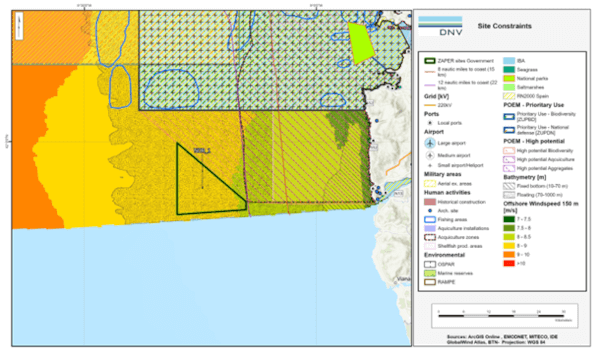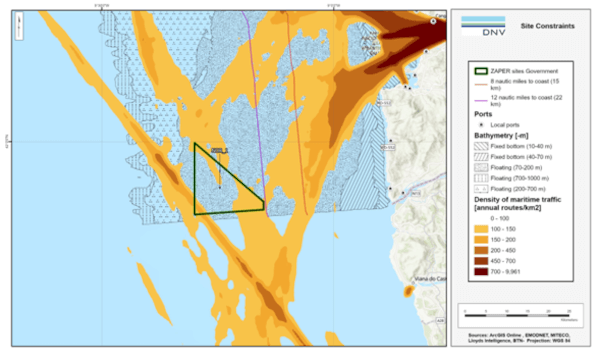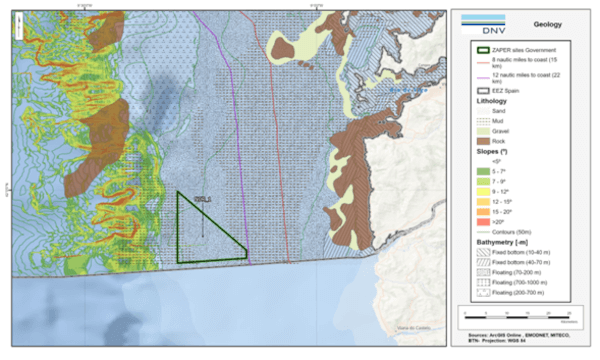GIS offshore wind site prospection-screening assessments in DNV
Find the most suitable sites for the development of your offshore wind farm with the help of DNV's GIS-based site prospection analyses.
In the last few years, the urgency of the energy transition has become more acute, and the pace of renewable energy development has accelerated accordingly. DNV’s recently launched Energy Transition Outlook 2023 forecasts that by 2050 about 9% of power supply will come from offshore wind. However, delays in planning and permitting, especially in regions like North America (specifically the United States), Europe, and the Indian Subcontinent, are becoming major roadblocks to the energy transition.
Before making large investments, developers need to screen early and quickly assess and identify not only the best sites but also the ones with more probability to succeed. For this purpose, a GIS study becomes key to address this challenge.
What we do
DNV is highly focused on offshore wind development, and regularly conducts GIS-based site prospection analyses to find the most suitable sites to help our customers develop an offshore wind project within an entire country or a specific region. We have a global presence supported by local specialists—we can support analysis anywhere a customer wishes to dive in.
Our approach
To provide useful, visual insights, we combine our deep knowledge of offshore wind with the most advanced GIS expertise. Our analysis also takes into consideration a high-level comparative levelized cost of energy (LCOE) estimation to compare conditions across the selected area or between specific locations. This comparative LCOE takes into consideration wind resource, bathymetry, metocean conditions, and distances to the coast and electrical grid network. We also consider the site’s possible constraints, such as environmental restrictions, government designated usages, existing infrastructure, or fishing areas, among others.
Deliverables
We provide our customers with a comprehensive report that includes basic statistics on the site’s conditions (proposed size, wind speed, bathymetry, waves, and distance to coast), descriptive maps, an explanation of our findings detailing any constraints or site infrastructure, and a couple of rankings based on comparative LCOE and on a qualitative review of the identified constraints. This provides a full perspective of the most suitable areas across the target region as well as a valuable ranking to prioritize the most suitable areas for further analysis.
Additionally, this analysis can be complemented with detailed reviews of other key factors such as nearby port facilities, geotechnical conditions, or the grid network, which results in a complete overview of the offshore wind potential.
It is also possible for customers to access a GIS online atlas where one sees and interact with the layers, make basic measurements, and directly access the attribute’s information.
To sum up and as a practice example
A picture is worth a thousand words and three pictures even more. The three maps below display the constraints affecting a certain offshore area, the nearby maritime routes, and finally the soil conditions:



The importance of offshore wind site prospection
When selecting a suitable site for offshore wind there are several factors that should be explored; identifying the best location based on the resource and any possible limitations is only the first step in these complex projects.
- When selecting a site, it is crucial to know the potential constraints that could affect wind farm development as well as the risks that may arise during the design and permitting phase. The sooner the risks are identified, the easier they can be mitigated or avoided
- The proximity to available infrastructure such as ports facilities or electrical grid connection points is key for both the construction and operations phases of a project
- The ability to compare potential sites using objective criteria, including on-site statistics of the resource, bathymetry, metocean conditions and constraints, is a great tool to support the decision-making process
- Identification of promising areas serves as a base for the next steps in project development: a detailed grid review, geotechnical analysis, or detailed LCOE calculations.
1/17/2024 9:00:00 AM
